Operation Mincemeat or the man who never was, was a plot to fool the Nazis during WWII, now a 2022 film by Colin Firth, filmed in Spain and London.
By Nick Nutter | Updated 14 May 2022 | Huelva | History |
Login to add to YOUR Favourites or Read Later


Crescent moon over the Gulf of Cadiz
Operation Mincemeat is an upcoming British war drama film directed by John Madden. The film is based upon Ben Macintyre's book on the British Operation Mincemeat during the Second World War. It will be distributed by Warner Bros. International in much of Europe, including the UK, and through Netflix in North America. The film is scheduled to be released in the United Kingdom on the 20th May2022. But what was Operation Mincemeat, is it a true story or a wartime myth?
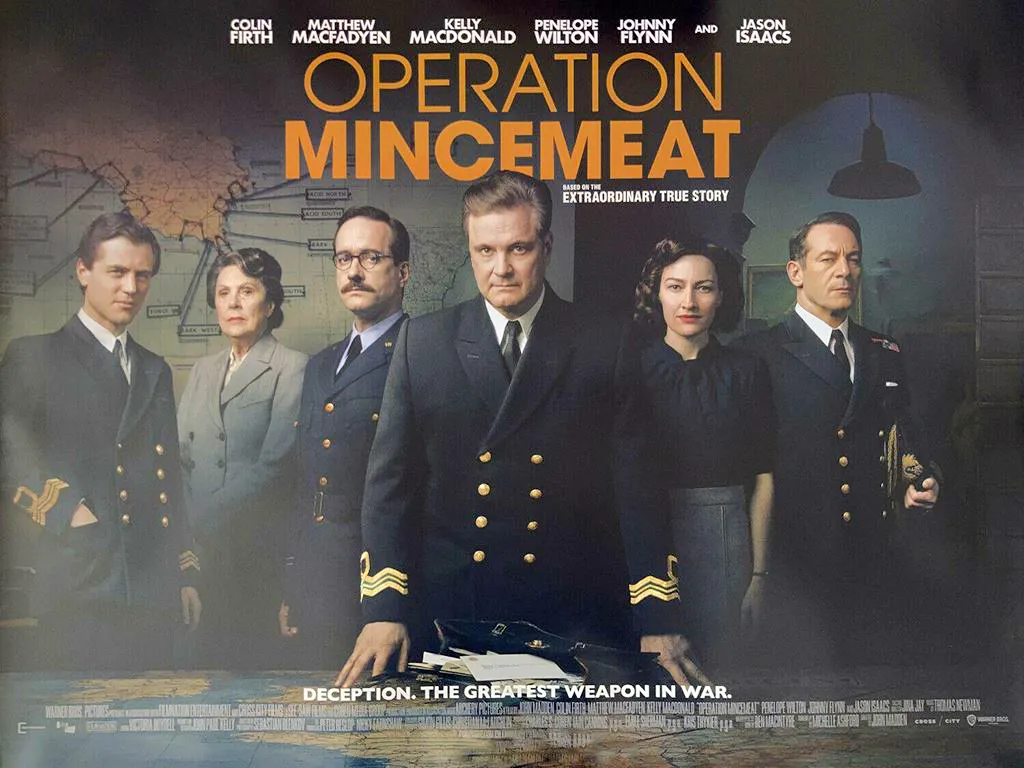
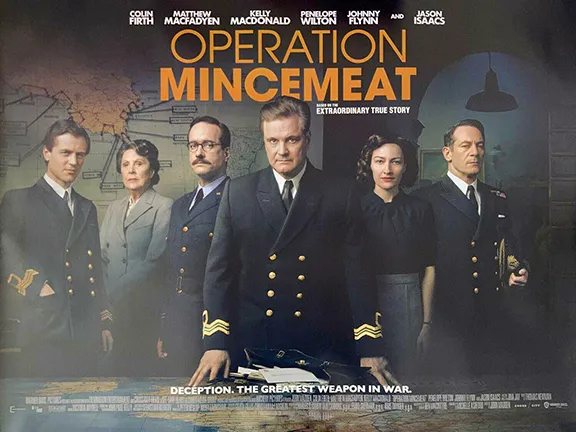
Operation Mincemeat - The Film
Operation Mincemeat is a true spy story that changed the course of World War II. It was one of the finest and most significant hoaxes in history and has been the subject of more than five books, three films and three plays. The intelligence operation centres around a Major Martin, whose real identity was not revealed until 1996.
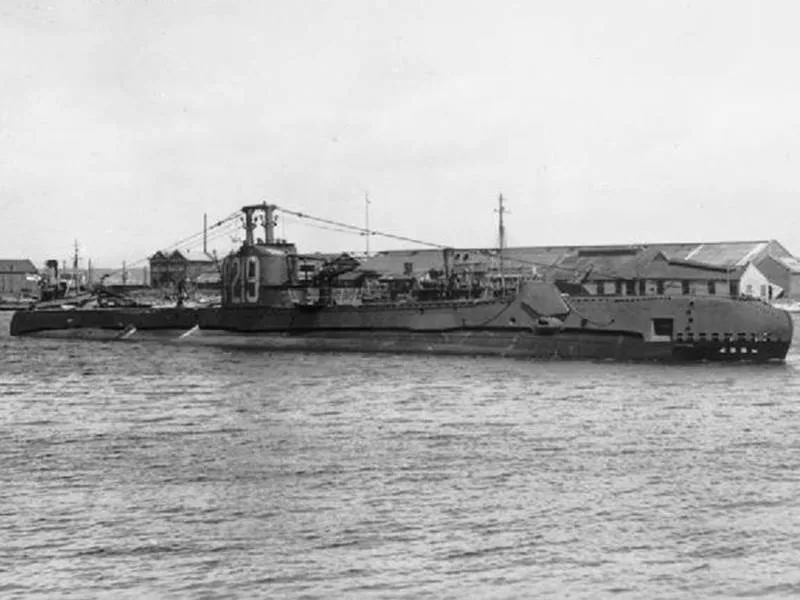
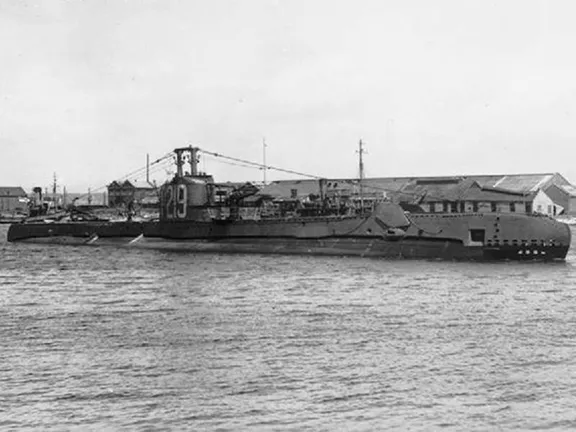
His Majesty's Submarine Seraph
Only a thin sliver of the waning crescent moon seen through a gauzy veil of cloud very low down on the eastern horizon illuminated the Gulf of Cadiz. In three more nights, the moon would be new but then it would be too dark for what was planned for the night of Thursday 29th April 1943.
At 4.30am on Friday 30th April, just 22 minutes after moonrise, with barely a ripple, a periscope emerged from the sea and rapidly turned through 360 degrees. Lieutenant Bill Jewell, commander of His Majesty's Submarine Seraph made his first quick reconnaissance. Only two specks of light showed, both more than a mile away to the west, probably local sardine fishermen night fishing with the aid of a light in the boat, a traditional method along the Atlantic coast of Spain, in any case too far away to interfere with Seraph. To the north the low lying sandspit, Punta Umbria, was faintly backlit by the glow of urban lights from the town of Huelva, one mile inland in neutral Spain. It had been an impressive feat of navigation to bring the submarine to just this spot on a largely featureless coastline, underwater and undetected, just 1 mile off the mouth of the Rio Odiel. Even more impressive to arrive at just the right time, low tide.
Seraph glided to the surface. Lieutenant Jewell joined his first lieutenant, Lieutenant David Scott, on the bridge. All was clear and Jewell ordered a canister to be brought on deck and then cleared the deck and bridge of crew. The canister had been brought all the way from Holy Loch in Scotland where it had been loaded aboard on the 19th April. The crew thought it contained a top-secret meteorological device. It was important they never discovered the true contents, the fewer people who knew the better.
Lieutenant Scott, the only other officer aware of the contents, opened the canister. He removed a male body dressed in the uniform of a Royal Marine officer with a greatcoat over his battledress uniform. Scott and Jewell fitted the corpse with a lifejacket and attached one end of a leather coated security chain to the coat's belt, running the other end down the right sleeve and fastening it to a briefcase. Lieutenant Jewell read the 39th Psalm as the officers committed the body of Major Martin to the deep. Operation Mincemeat had been launched.
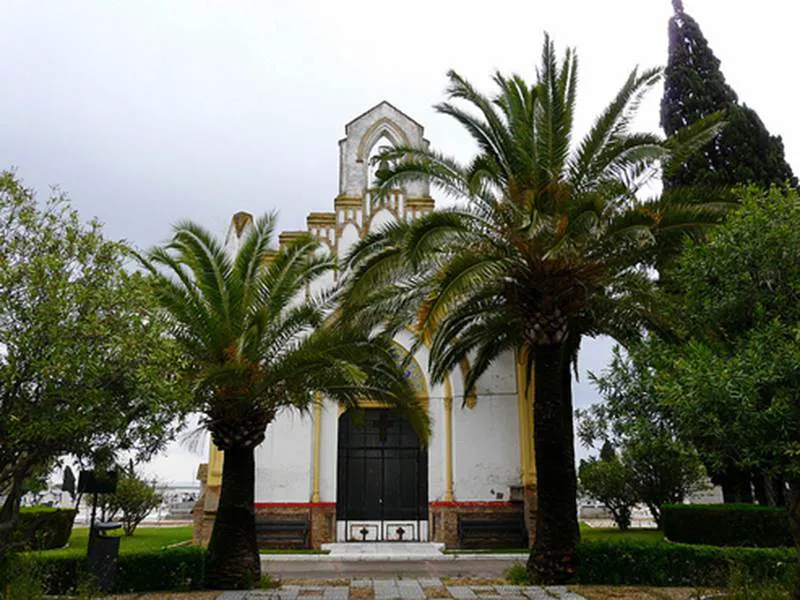
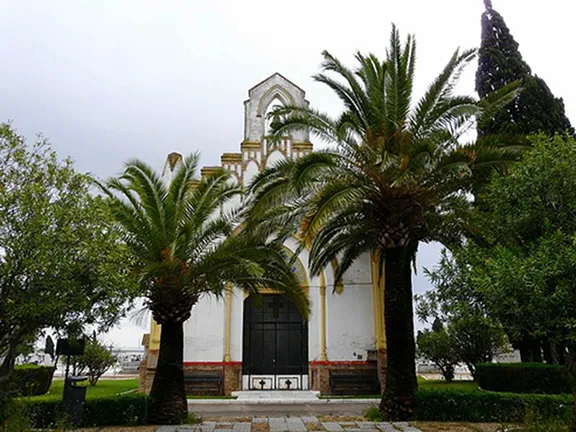
Nuestra Senora cemetery
Mincemeat was part of an overall operation called Operation Barclay which was a series of ruses developed in 1943 designed to persuade the Germans that an allied invasion of southern Europe would be through the Balkans rather than Sicily. Planting fake documents on fresh corpses that would then be found by the enemy was not a new idea, but Operation Mincemeat had a complication, the body could not be fresh since it had to be prepared in the UK and transported to the Spanish coast and then appear that death was because of drowning following an aeroplane crash into the sea.
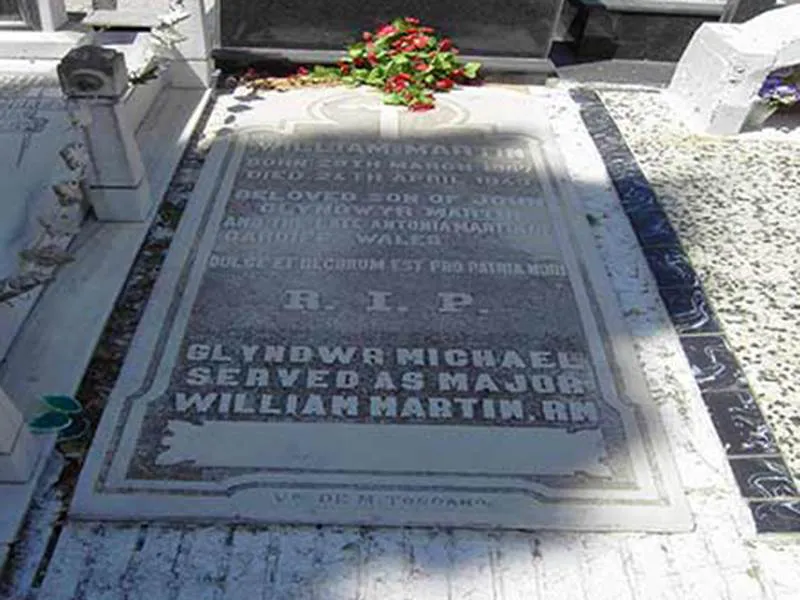
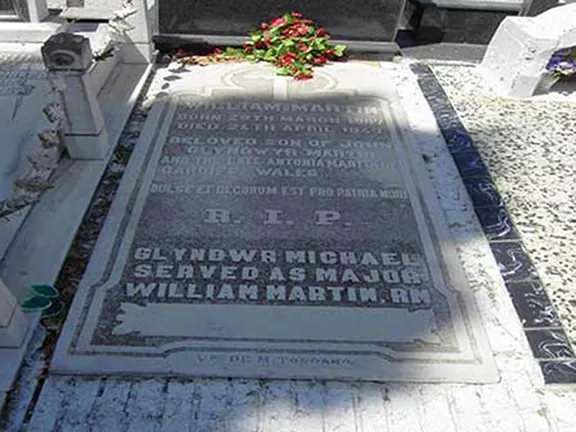
Glyndwr Michael served as Major William Martin RM
Flight Lieutenant Cholmondeley who was seconded to MI5, and Captain the Hon. Ewen Edward Samuel Montagu, CBE, QC, DL, RNR. who worked in Naval Intelligence, were the brains behind Operation Mincemeat. Montagu was a British judge, Naval intelligence officer and author.
Montagu randomly selected the codename Mincemeat from a secret list of available codenames. The idea was that no codename for any operation should have any relevance to the operation itself. The Mincemeat plan was to place documents on the corpse, and then float it off the coast of Spain, whose nominally neutral government was known to co-operate with the Abwehr, the German military intelligence organisation.
The “drowned” man was actually a Welsh tramp whose body was obtained in a London morgue.
Pathologist Sir Bernard Spilsbury was consulted for advice regarding locating a cadaver and Northern District of London coroner, Bentley Purchase, was subsequently asked to keep a look out for a suitable body. He pointed out that, "I should think bodies are the only commodities not in short supply at the moment, even with bodies all over the place, each one has to be accounted for."
In January 1943 Purchase found a suitable corpse, that of a Welsh tramp who had died through eating rat poison containing phosphorus. Montagu commented that the undernourished corpse did not look like a fit field officer. Purchase told him, "he does not have to look like an officer – only a staff officer".
The body was put into storage at a temperature just above freezing point. Purchase warned that it had to be used within three months or it would have decomposed too much to be of use.
Montagu and Cholmondeley created a legend for the corpse who was thereafter known as Captain (Acting Major) William Martin of the Royal Marines that included a fictitious girlfriend and father, a family solicitor and a non-existent account at Lloyds Bank. The deception went as far as Cholmondeley wearing the uniform procured for Major Martin to give it a used look.
Meanwhile the documents to be used in the deception were being prepared. Lieutenant General Sir Archibald Nye, Vice Chief of the Imperial General Staff, wrote a letter to General Sir Harold Alexander, commander of the Anglo-American 18th Army Group in North Africa. The letter covered several subjects not related to an invasion and then the following paragraph:
"We have recent information that the Bosche have been reinforcing and strengthening their defences in Greece and Crete and C.I.G.S. [Chief of the Imperial General Staff] felt that our forces for the assault were insufficient. It was agreed by the Chiefs of Staff that the 5th Division should be reinforced by one Brigade Group for the assault on the beach south of CAPE ARAXOS and that a similar reinforcement should be made for the 56th division at KALAMATA".
This letter together with other corroborative 'evidence' was place in the briefcase attached to Major Martin's body.
Major Martin was found by Spanish fishermen the following morning, the 30th April, and the body was taken to Huelva. There the British Vice Consul, F. K. Hazeldene, was informed by the Spanish. He started a series of communications with the Admiralty using a code known to have been cracked by the Germans, in which the recovery of the briefcase was stressed as being a priority.
On the 1st May a post-mortem was carried out on the body by Spanish doctors. Cause of death was given as 'asphyxiation through immersion in the sea'. The following day Major Martin was buried in the San Marco section of Nuestra Senora cemetery in Huelva with full military honours.
The briefcase was not returned to the Vice Consul until the 11th May by which time the planted information it contained had been copied and had found its way to the Abwehr at the German Embassy. From there the information was transmitted to Berlin where it was immediately brought to Hitler’s attention.
Operation Mincemeat is regarded as a tactical success.
On the 14th May 1943 Grand Admiral Donitz met Hitler to discuss the progress of the war. The Mincemeat documents were referred to as the 'Anglo Saxon order'. The minutes of the meeting showed that, "The Führer does not agree with ... [Mussolini] that the most likely invasion point is Sicily. Furthermore, he believes that the discovered Anglo-Saxon order confirms the assumption that the planned attacks will be directed mainly against Sardinia and the Peloponnesus." Reinforcements were sent to Greece and Sardinia but not Sicily.
The Allies invaded Sicily on the 9th of July 1943 in an operation called Husky. As a result of Operation Mincemeat, the island was taken from the Germans more quickly and with fewer casualties than had been anticipated.
It was announced in May 2019 that the film Operation Mincemeat would be directed by John Madden, and Colin Firth would star. Kelly Macdonald joined the film in October. In December, Matthew Macfadyen, Penelope Wilton, Johnny Flynn, Tom Wilkinson, Hattie Morahan, Simon Russell Beale, Paul Ritter and Mark Gatiss were added to the cast. Jason Isaacs was announced as part of the cast in March 2020.
Principal photography began in December 2019 between London and Spain. Filming locations include a battle scene at Saunton Beach in North Devon in February 2020 and a scene in Málaga in March 2021.
Books
1950 - Operation Heartbreak - Duff Cooper
1953 - The Man Who Never Was - Ewen Montagu
1977 - Beyond Top Secret U - Ewen Montagu, a wartime autobiography
2010 - Operation Mincemeat - Ben Macintyre
Films
1956 - The Man Who Never Was starring Clifton Webb, Gloria Grahame and Robert Flemyng produced by Andre Hakim
2010 - Operation Mincemeat based on the book by Ben Macintyre
Plays
2001 - Operation Mincemeat written by Adrian Jackson and Farthana Sheikh
2015 - The Man Who Never Was produced by the Welsh Theatre Company
2019 - The Man Who Never Was Musical performed at the New Diorama Theatre, London
It was not until 1996 that the corpse of Major Martin was revealed as that of Glyndwr Michael through evidence found in the Public Records Office. In 1997 the Commonwealth War Graves Commission added the postscript "Glyndwr Michael served as Major William Martin RM" to 'Major Martin's' grave at Huelva.